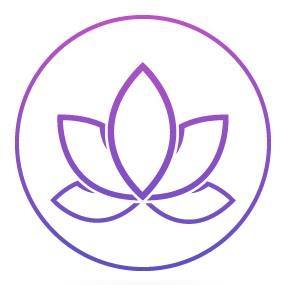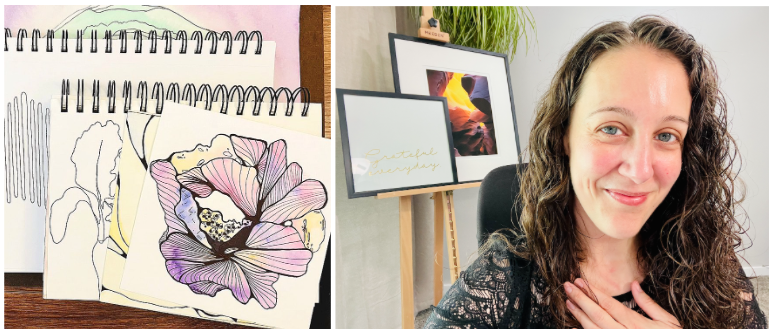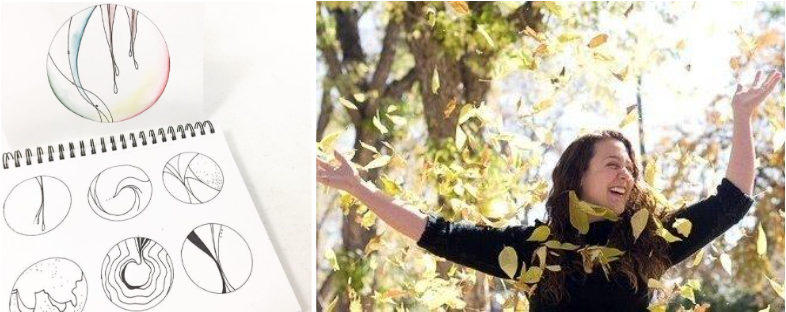Have you ever sat down to create, only to freeze, overwhelmed by too many ideas or stuck in silence? That feeling of not knowing where to begin is called analysis paralysis. It’s often rooted in perfectionism, self-doubt, or the pressure to make something “good.”
This post offers a mindful, compassionate path to overcoming creative blocks. You’ll learn simple, kind strategies to help you reconnect with your Inner Muse and return to the joy of making art.
Breaking Through Perfectionism: A Mindful First Step to Reconnect with Your Inner Muse
One of the biggest barriers to creativity is the belief that your work has to be perfect. This kind of pressure doesn’t inspire: it overwhelms.
If you’ve ever avoided starting something because it “might not turn out right,” you’re not alone. This experience is common among artists, writers, and creators of all kinds.
The good news? You can shift this mindset. With gentle awareness and mindful creativity practices, you can return to your creative flow and rediscover the joy of exploring.
Six Mindful Steps to Overcome Creative Blocks
1. Notice
Start by pausing. Ask yourself:
Am I feeling overwhelmed?
Am I judging my ideas or abilities?
Am I unsure where to begin?
Noticing your thoughts or feelings without judgment helps create space for change.
2. Name
Give your experience a name. You might say:
“I feel stuck.”
“I’m overwhelmed by too many ideas.”
“I’m afraid it won’t be good enough.”
Naming helps you see your experience clearly. It reminds you that this is just a moment, not a permanent truth.
3. Soften and Breathe
Place a hand over your heart. Take three deep breaths. Imagine softening the tightness or pressure you feel.
This helps calm the nervous system and creates space for your Inner Muse to gently return.
4. Permission to Play
Creativity needs freedom. Give yourself permission to make something imperfect, messy, or silly.
Here are a few playful creativity prompts to try:
Use only two colors to make a drawing
Scribble freely for five minutes
Create something inspired by one word or shape
By focusing on play instead of outcome, you invite curiosity back into your process.
5. Simplify
When things feel too big, break them down.
Try one of these simple actions:
Set a timer for five minutes and create without stopping
Tackle one small step in a larger project
Limit your materials to reduce decision fatigue
Simplifying helps build momentum, one small win at a time.
6. Celebrate Every Step
Take a moment to honor what you’ve done:
You showed up
You noticed your feelings
You created something, no matter how small
Celebrating helps strengthen new habits and reminds your Muse that her efforts matter.
Compassionate Curiosity: The Key to Creative Freedom
One of the most powerful tools in creative recovery is compassionate curiosity. You cannot be critical and curious at the same time.
Try this shift:
Instead of “This isn’t good enough,” ask “What else might I try?”
Instead of judging, stay curious about what’s unfolding
This practice creates safety, which helps your creativity grow stronger and more playful over time.
Support Your Creative Practice with Mindful Tools
Looking for a way to build a daily creative habit? The BreathDoodles™ Course blends mindful drawing techniques with breathwork to help you soften resistance and reconnect with your Inner Muse in just five minutes a day.
This course helps you practice noticing, naming, softening, and playing: all while building momentum and self-trust in your creative process.
Sharing Creativity with Others
If you're excited to teach mindful art to others, the Muse Journaling™ Teacher Training program is a great next step. You'll learn how to guide practices like BreathDoodles™, AquaDoodles™, Mindful Mandalas, and more.
As a certified instructor, you'll support others while deepening your own creative journey.
Final Thoughts: Creativity as a Kindness Practice
Creativity is not about perfection. It’s about connection, curiosity, and self-kindness.
When you approach your work with compassion, you create a safe space where your Muse can return. With each small step, you build confidence and creative freedom.
Whether you’re scribbling, journaling, breathing, or simply noticing what you need; this is what creative self-care looks like.


